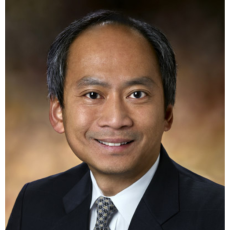In which ways will your programs change the therapeutic protocols in rare diseases?
Cuong: Rare diseases are still an unmet need in the medical field and we are trying to change this paradigm. The main challenge in finding therapies in this space resides in directing the drug to the right part of the body. Mannose 6-phosphate (M6P) is a specialized carbohydrate structure which allows the enzymes to bind to the surface of cells, taking them to the lysosomes where they can take effect. M6P has been known for decades but there was no natural way to get it expressed on these enzymes so all attempts to make this work were suspended. However, our co-founder, Stuart Kornfeld kept at it for over 40 years and he created a viable way to add M6P to every single enzyme. This amazing finding is able to address both Pompe and Gaucher diseases.
Hung:

Our bodies have an extraordinary way of using carbohydrates to help cells identify what belongs in the body and what does not.
M6P is a natural sugar and a biologic motif that allows cells to internalize proteins from the outside. From a therapeutic standpoint this has been the basis of how enzyme replacement therapies work. Phosphatase (Ptase) is a natural enzyme that resides in a compartment called Golgi which is the place where the vast majority of all carbohydrates processes occur, including the addition of M6P onto novel enzymes. However, the phosphatase enzyme is produced as an inactive protein and this is the reason why making very high levels of M6P is highly challenging.
While it can be effective to make the protein in the case of in vivo gene therapies, it still goes back to making a protein with a sufficient amount of M6P. Increasing the dosage does not work as it only exacerbates the problem and the process is compounded with much more proteins that has to be dealt with. Consequently, we are taking a particular route where we recognize that in order to make proteins with higher levels of M6P, we have to also increase the phosphorylation activity within these cells. Our truncated S1S3 Ptase platform technology is sufficiently small to incorporate both the Ptase gene and the therapeutic gene in the same cell. As a result, our protein can be used both for developing ERT and gene therapies.
How can your programs be leveraged to help build cures for other diseases?
Hung: The beauty of this technology is that the same platform can be applied for essentially all these different diseases because the M6P receptor pathway is available to all subtypes, including the cells in the brain (neurons, etc.). This can have applications for Type 2 and 3 Gaucher disease which is often linked to Parkinson's.
Cuong: There are roughly 60 lysosomes and only seven are treated right now but thanks to our technology, we will be able to create sophisticated therapies and get ERTs to everywhere in the body. We will also have the option to open up the aperture to address the other untreated diseases. Existing treatments are not able to pass the blood brain barrier but the M6P technology can get past that and into the neurons. Moreover, it is small enough to be placed inside a virus so that we can possibly inject it directly into the brain to make sure it gets the right enzymes.
How did you perceive the investors' appetite evolve, especially towards your innovations?
Cuong: Unfortunately, at the moment, the entire biotech investing market, especially for preclinical companies, is frozen so we are now relying on existing shareholders to keep the development going. To better handle the current financial environment, we are also looking for potential strategic partners with whom we could further collaborate. Presently, we are taking a defensive posture to make every dollar last so that we are still around at the end of the year when, hopefully, the markets will unfreeze.
What would be some of the most important milestones that were acquired in medicine up to now and how does M6P fit into this picture?
Cuong:

We are now witnessing an exponential growth in our understanding of science which, in fact, started in the late 80's when we decoded the human genome, allowing us to have a much better grasp of the genetic and the epigenetic basis of medicine.
These findings led to a concentrated effort to reveal all the underpinnings of medicine. Even though it took decades of hard work, we are finally at the take off point where we are going to experience a great deal of groundbreaking innovations. At an internal level, we are ready to start the clinical trials for our Gaucher disease program and we hope that the Pompe disease program will follow in its footsteps sometime in 2024. Furthermore, if we manage to attract the right funding, the gene therapy side for Gaucher disease will hopefully start trials in early 2025.
Hung: Nowadays, there seems to be a clearer overlap in terms of how these different diseases come together and how aging and genetic disorders are intertwined in many ways. By increasing the lysosomal activity, we are able to improve the aging process. This aspect will help us prevent and handle a wide variety of neurodegenerative conditions, giving way to a better future for patients.





